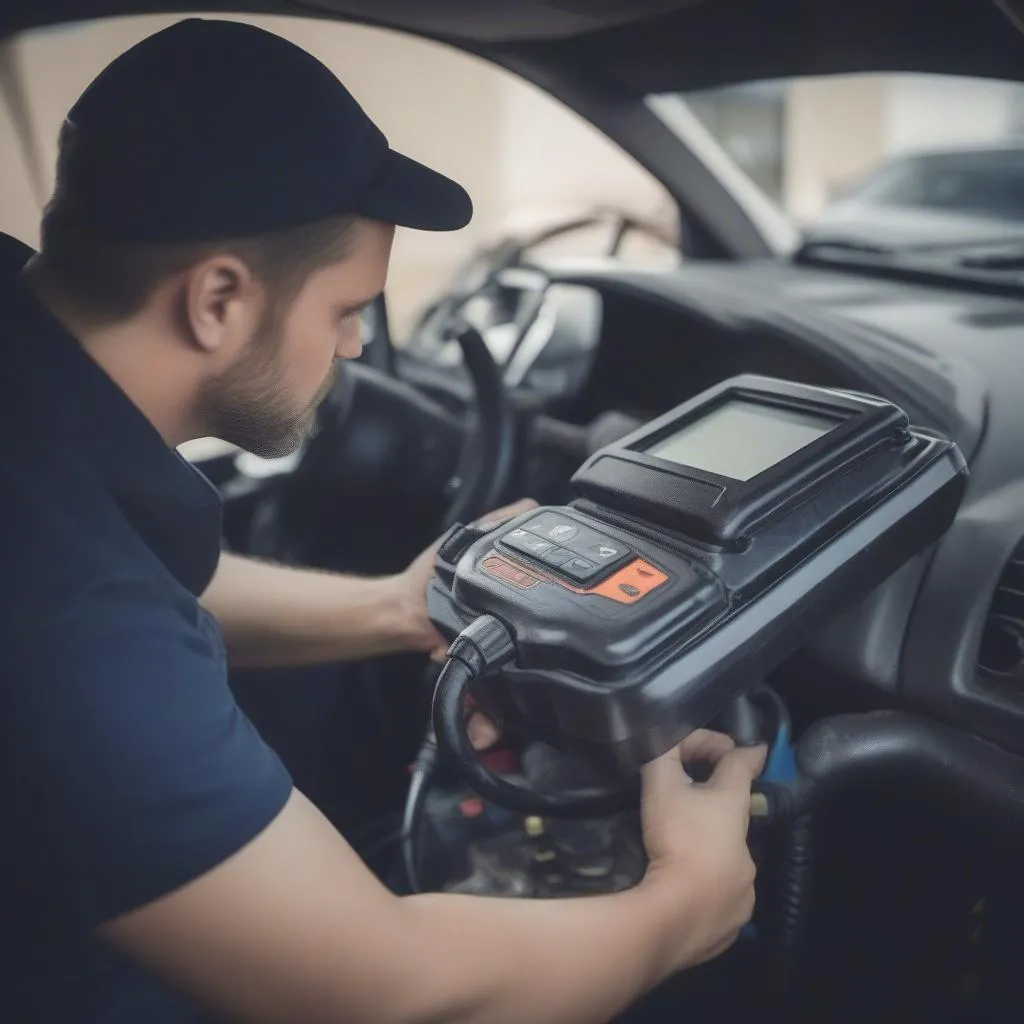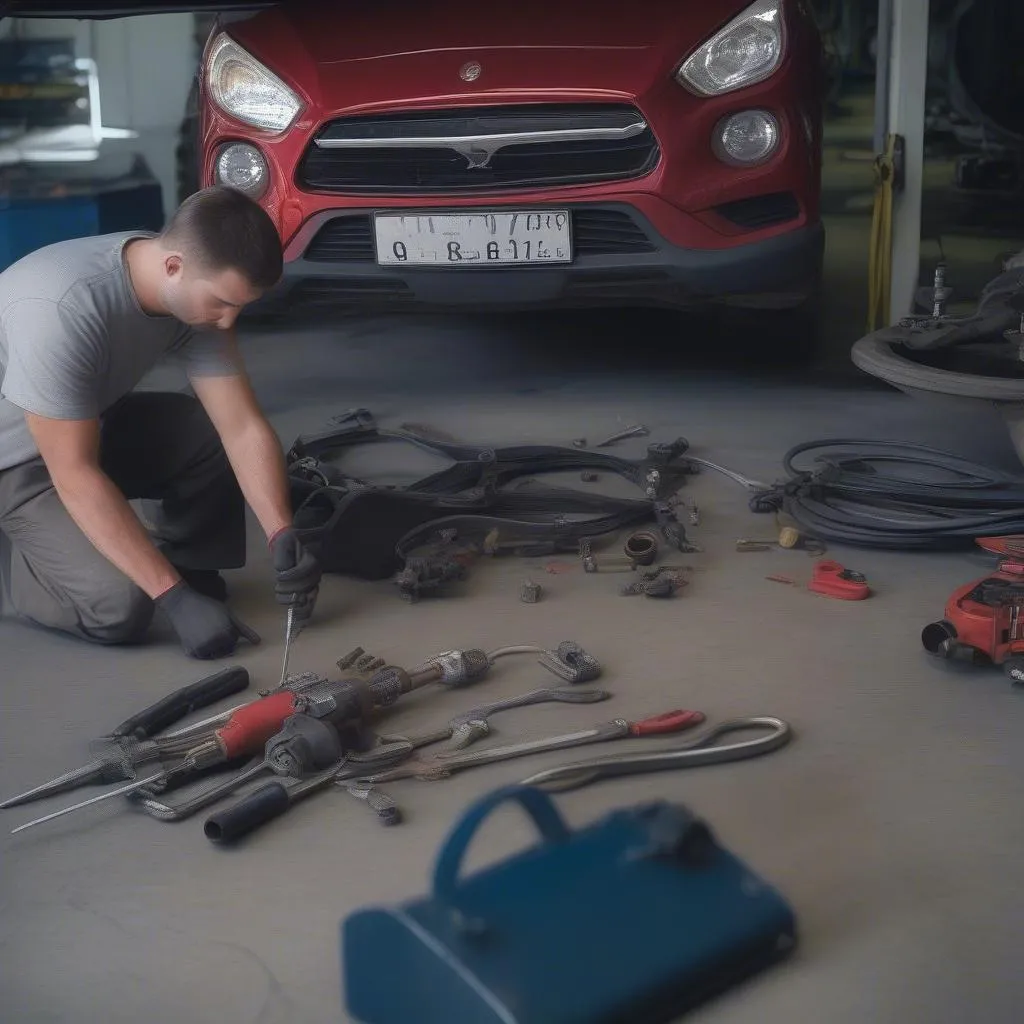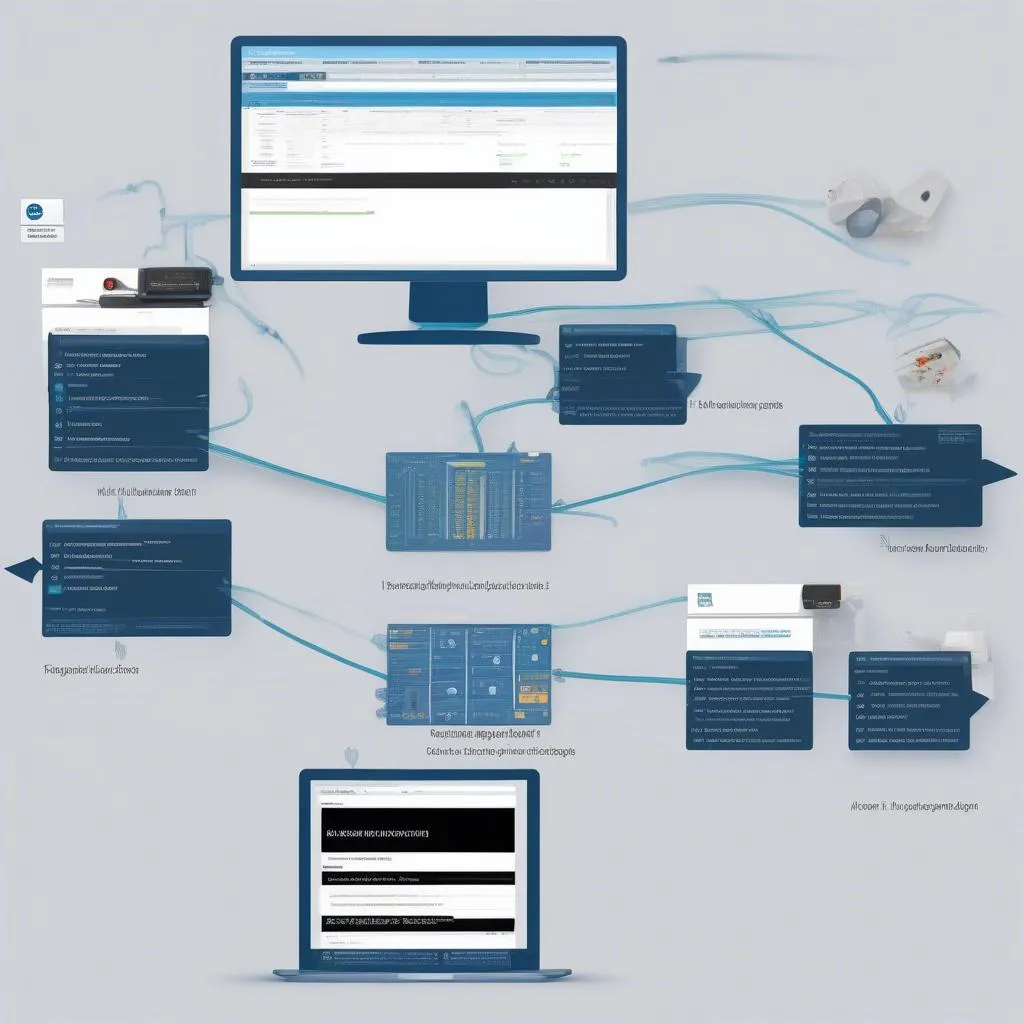The ABS light on your Mercedes dashboard is a critical safety feature that shouldn’t be ignored. When illuminated, it signals a potential problem within your Anti-lock Braking System (ABS). Ignoring this warning light could mean compromising your car’s ability to brake safely, especially in emergency situations.
This comprehensive guide will walk you through the common causes of an ABS light in a Mercedes, how to diagnose the issue, and the steps you can take to fix it.
Understanding the ABS Light
The ABS system is designed to prevent your wheels from locking up during hard braking, allowing you to maintain steering control. When the ABS light comes on, it means the system has detected a fault and may not function as intended.
Common Causes of an ABS Light on a Mercedes
Several factors can trigger the ABS warning light on your Mercedes. Here are some of the most common culprits:
1. Faulty ABS Wheel Speed Sensors
One of the most frequent causes is a problem with one or more of the ABS wheel speed sensors. These sensors monitor the rotational speed of each wheel and relay that information to the ABS control module. A malfunctioning sensor can send incorrect data, triggering the ABS light.
2. ABS Control Module Issues
The ABS control module is the brain behind the entire system. It receives data from the wheel speed sensors and other components to determine if and when to activate the ABS. A faulty control module can lead to a range of problems, including an illuminated ABS warning light.
3. Low Brake Fluid Level
Brake fluid is essential for the proper functioning of your Mercedes’ braking system, including the ABS. If the brake fluid level drops too low, it can trigger the ABS light. This could indicate a leak in the brake lines, which needs immediate attention.
4. Worn Brake Pads
Believe it or not, worn brake pads can sometimes cause an ABS light to illuminate. As the pads wear thin, it can affect the performance of the ABS system.
5. Blown Fuse
Like any electrical system in your car, the ABS has fuses that protect its components. A blown fuse can disrupt the flow of electricity, causing the ABS light to come on.
Diagnosing the ABS Light
Before attempting any repairs, it’s crucial to pinpoint the root cause of the ABS light. Here are a few diagnostic steps:
1. Visual Inspection
Begin with a visual check of your brake fluid level. If it’s low, there might be a leak that needs addressing.
2. Check for Diagnostic Trouble Codes (DTCs)
The most effective way to diagnose an ABS problem is to read the diagnostic trouble codes stored in your Mercedes’ computer. You can do this using an OBD-II scanner, a device that plugs into your car’s diagnostic port and retrieves these codes.
 OBD2 Scanner
OBD2 Scanner
3. Seek Professional Help
If you’re uncomfortable with the diagnostic process or suspect a more complex issue like a faulty ABS control module, it’s best to seek help from a qualified mechanic specializing in Mercedes vehicles. They have the expertise and tools to diagnose and repair the problem accurately.
Fixing the ABS Light on Your Mercedes
Once you’ve identified the culprit behind your illuminated ABS light, you can proceed with the necessary repairs. Here’s a general overview of common fixes:
1. Replacing ABS Wheel Speed Sensors:
If a faulty wheel speed sensor is the issue, it will need to be replaced. This involves locating the sensor (usually behind the brake rotor), disconnecting it, and installing a new one.
2. Addressing ABS Control Module Problems:
In some cases, an ABS control module can be reset or repaired. However, if it’s damaged beyond repair, replacement will be necessary.
3. Refilling Brake Fluid and Repairing Leaks:
If low brake fluid triggered the ABS light, refill it to the proper level. Be sure to identify and repair any leaks in the brake lines to prevent future issues.
 Brake Line Repair
Brake Line Repair
4. Replacing Worn Brake Pads:
If your brake pads are significantly worn, replacing them can often resolve an ABS light issue.
5. Replacing Blown Fuses:
A blown fuse is a simple fix. Locate the ABS fuse in your car’s fuse box and replace it with a new one of the same amperage.
Frequently Asked Questions
Q: Can I still drive my Mercedes with the ABS light on?
A: While you may still be able to drive, it’s strongly discouraged. The ABS light indicates a potential problem with your braking system, which could lead to reduced braking performance or even brake failure.
Q: Is it expensive to fix an ABS light on a Mercedes?
A: The repair cost can vary widely depending on the underlying cause. A simple fix like replacing a fuse could cost as little as $20, while replacing an ABS control module could cost upwards of $1,000.
Q: Can a software update fix an ABS light issue?
A: In some instances, a software update from Mercedes might be able to address certain ABS-related issues. However, this is not always the case, and a physical repair may still be necessary.
For a detailed guide on the cost of fixing an ESP light (which is related to the ABS system) specifically for Mercedes vehicles, check out this helpful resource: Cost of Fixing ESP Light for Mercedes.
Conclusion
The ABS light on your Mercedes dashboard is a warning that should never be ignored. Addressing the issue promptly ensures your safety and the optimal performance of your vehicle. While some ABS light fixes can be straightforward, others require the expertise of qualified Mercedes mechanics. Regular maintenance and inspections can help prevent many ABS problems from occurring in the first place.
Remember, when it comes to safety, it’s always better to err on the side of caution and seek professional help if needed.

